Let us not wallow in the valley of despair, I say to you today, my friends.
And so even though we face the difficulties of today and tomorrow, I still have a dream. It is a dream deeply rooted in the American dream.
I have a dream that one day this nation will rise up and live out the true meaning of its creed: "We hold these truths to be self-evident, that all men are created equal."
I have a dream that one day on the red hills of Georgia, the sons of former slaves and the sons of former slave owners will be able to sit down together at the table of brotherhood.
I have a dream that one day even the state of Mississippi, a state sweltering with the heat of injustice, sweltering with the heat of oppression, will be transformed into an oasis of freedom and justice.
I have a dream that my four little children will one day live in a nation where they will not be judged by the color of their skin but by the content of their character.
I have a dream today!
Rev. Martin Luther King
We began the day with breakfast out, something we haven’t done for a while. We chose the Bon Ton which sounds a bit twee but I read good Yelp reviews and understand it was a historic restaurant was closed for 5 years but recently reopened as a breakfast and lunch restaurant. We parked, read the instructions on the meter, put our quarter in and - no time. We put another quarter in and - no time. Oops, looks like we’ve got a bad meter. I went over to the restaurant and looked in - no one inside except the staff. And there was a neon ‘PIZZA’ sign on the side of the building. Hmmm - not looking good. Oh, well, I went inside and asked if there was a trick to the meters and one of the waitresses rushed across the street to check it out and talk with Gary who was talking with another woman having trouble with her meter. Meanwhile I put a quarter into the meter on the restaurant side and - voila - I got 1 hour. Gary got in the car, pulled a U-turn and parked there. OK, let’s try the food. And, very good, I’d recommend it to anyone. The Yelp reviews were right.
As we were leaving the restaurant we saw someone else park in our original spot, put money in and - it worked. I hope he enjoyed our money. Oh well.
We asked about parking in the area and were told that most lots were $5.00 for the day. Well, why were we at an expensive meter? Ya live and learn. We’ll know better next time we’re in Memphis. We then drove to the National Civil Rights Museum, parked in a lot near there for the aforementioned $5.00 and planned to stay for the day while we visited other things in the area. The museum itself is in what used to be called the Lorraine Motel. It began life as a 16-room motel in 1925 named the Marquette. But when Walter Bailey bought it in 1945, he named it after his wife Loree and the song Sweet Lorraine. It catered to African Americans (one of the few hotels that did) and saw the likes of Aretha Franklin, Otis Redding, Ray Charles, Lionel Hampton and many other greats in Memphis for recording and performing.
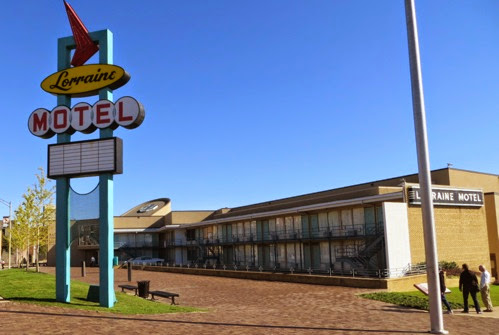
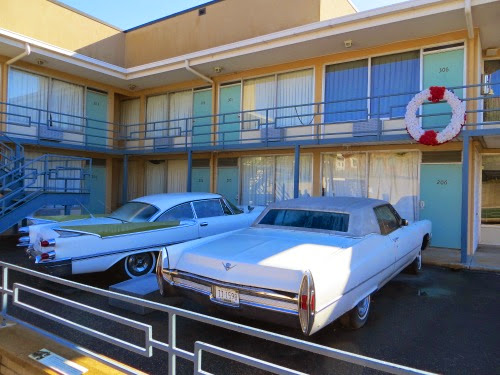
Martin Luther King and his associates stayed in rooms 306 and 307 while they were in Memphis for the sanitation strike. And, it was here that Dr. King was assassinated. Loree Bailey suffered a stroke hours after the assassination and died 5 days later. Eventually the motel went into bankruptcy but was bought by the Martin Luther King Foundation for $144,000 to be made into the Lorraine Civil Rights Museum. Unfortunately, there were many who actually lived in the hotel such as Jacqueline Smith, a maid in the hotel. She was finally forcefully evicted in 1988 and the $8.8 million Museum was built inside the motel itself.
Saying that the money ‘should be put to better uses, such as housing, job training, free college, clinic, or other services for the poor’, she thought that Martin Luther King would also approve of this rather than as a museum. She has maintained a constant vigil outside the motel, across the street for the last 22 years and 291 days. We saw her at her place as we entered the museum.
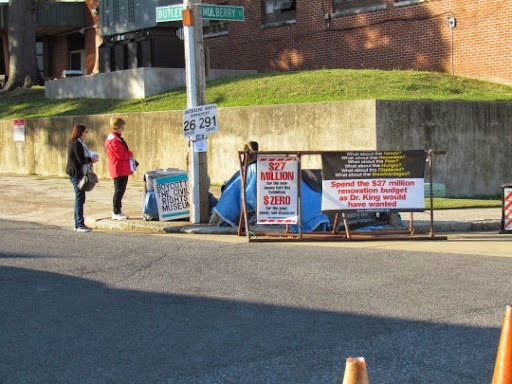
The museum begins with slavery in American history but also mentions that slavery has existed in many other cultures throughout history: slaves built the pyramids, slaves were mentioned in ancient China, slaves were used in Africa itself. But the museum concentrates on slavery in the US. I don’t want to go through all the various events in the Civil Rights struggles in the US, because they are covered very extensively in the museum. It covers the Jim Crow laws from 1896 - 1954, the Brown vs The Board of Education ruling, the Montgomery bus boycott, the Freedom rides, Birmingham and the church bombing, the Voting Rights Act etc. The museum was a wonderful mix of pictures, grainy black and white movies, interactive kiosks, first person accounts of experiences with Jim Crow Laws, quotations from participants in the sit-ins and other events and various other multi media.. There were speeches, short films, listening stations where we could hear more about the event spotlighted in that alcove,TV news reports and interviews with participants in the various events. You can step aboard a vintage bus, sit down and hear the altercation between a public transit system worker in Montgomery and Rosa Parks.
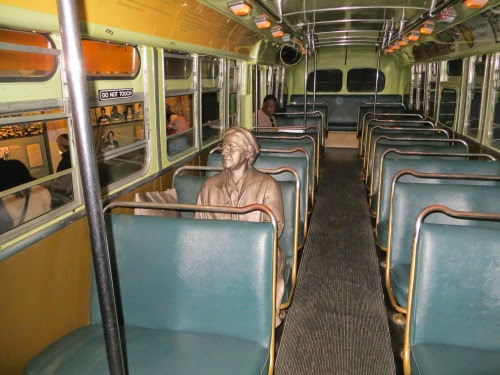
Beside the bus are three women figures showing how people in Montgomery walked to work rather than take the buses during the one-year strike. In one case they had a reproduction of the bus that Rosa Parks was riding in when she was asked to move. In another, they had a reproduction of a Memphis sanitation truck.
I was especially intrigued by the strategy worked out by Thurgood Marshall and others who decided that they would start with a small piece, like discrimination in law schools and then chip away at other parts of discrimination in the US. Start small and keep chipping away.
The interior of the Lorraine motel has been extensively renovated into the museum as we wound around the first floor through all the early events. Then I realized that we were winding up a ramp to the Sanitation strike in Memphis in 19 //. I knew where we were going to end up: in Rooms 306 & 307 where King and his entourage were staying.
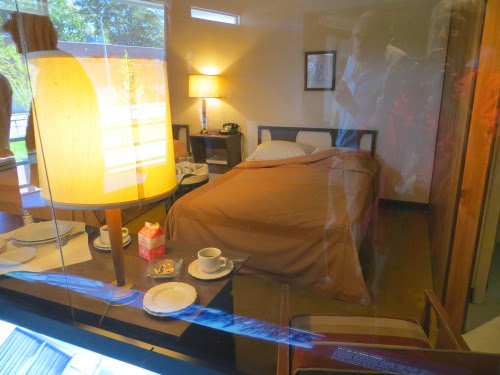
And, yes, at the top of the stairs was a full description of the sanitation strike with the replica garbage truck, lots of pictures and quotes and beyond that were the two rooms. Through the windows of the rooms we could see the building across the street from which the shots came which killed Dr. King.
I’m sure you’ve seen these two photos before: the first of Dr. King and his entourage, the second is after King has been shot and the others are pointing across the street at the window where the shot came from.
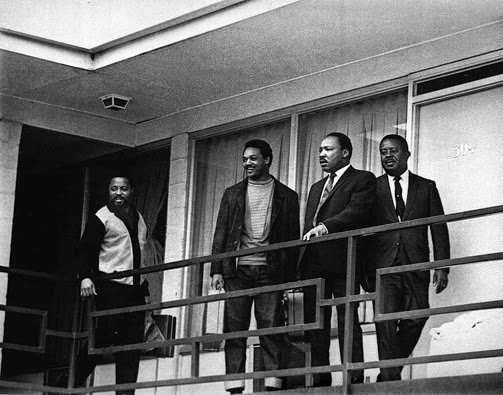
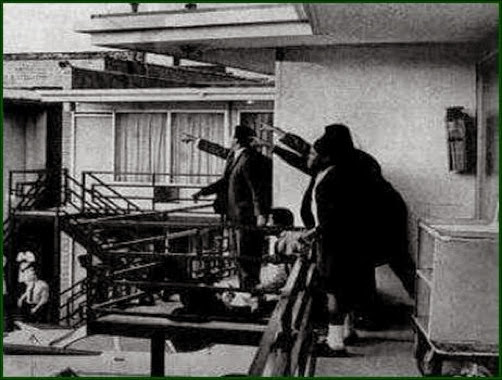
The museum is divided into two parts: the events leading up to the assassination of Dr. King in the old Lorraine motel and, in the second building across the street are the events after: the rooms rented by James Earl Ray, the gun, his car and a complete description of the forensics and finding of Ray with sections devoted to a possible conspiracy. You can see the room from which the shot came - it is the small partially-opened window right above the tree.
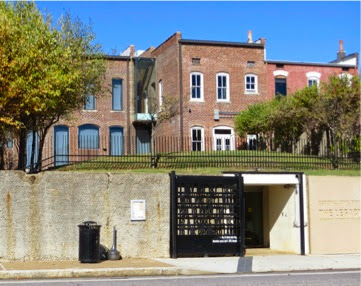
However, the second part of this building is devoted to other rights struggles in America and throughout the world: Women’s Rights, Gay Rights, the struggle against Apartheid, Tiananmen Square in China, sexual slavery throughout the world and all other struggles for civil rights.
I like a museum that not only presents the facts about whatever the subject is but also presents the context and the reasons why this is important. This museum went into each of these in great detail. I thought it an excellent museum.
Well, now, it’s 2:30, how about lunch? We walked back to the car and ate our lunch with the doors open to let in the warmth of the sun and the breezes. What a beautiful day. Our next stop was the Gibson Guitar factory where we took the tour through the manufacturing of the guitars. We learned that it takes 3 1/2 weeks to make a typical guitar with most of this time spent in the paint and lacquering departments. They make between 40 - 60 per day and sunburst is their most popular design followed by red and black. The cost of a guitar is mostly in the aesthetics: the paint, the amount of Australian pearl used in the frets and the shape. I was especially intrigued by the one guy there tuning the guitar to see if its sound was true. He was on the noisy floor of a manufacturing plant with lathes, saws and huge exhaust fans running. Yet there he was tuning and playing the guitar as if he were in the finest concert hall.
It was an OK tour but we thought the Taylor Guitar factory tour in San Diego was longer, more complete and much more intimate. We were much closer to the actual manufacture and could see it much more closely. Another couple on the tour liked the Martin Guitar factory tour in Pennsylvania much better.

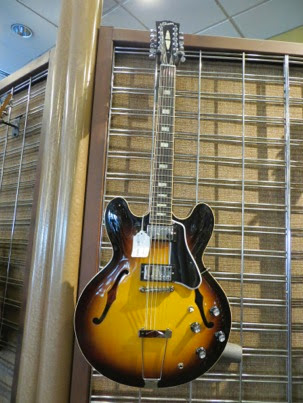
The guitar on the right is the most common design, while the one on the right is custom.
Next we walked through Beale Street, which even at 3:00 was hopping. I can’t imagine what it will be like after dark. We heard some blues bands tuning up and some giving early shows. How can you not enjoy walking down a street with blues music coming out of every building? Slow blues on the right, delta blues on the left and big band blues in front.
They’ve recently redone the waterfront area and we headed on down for our walk of the day. Beautiful park with a walk wending through it next to the water.
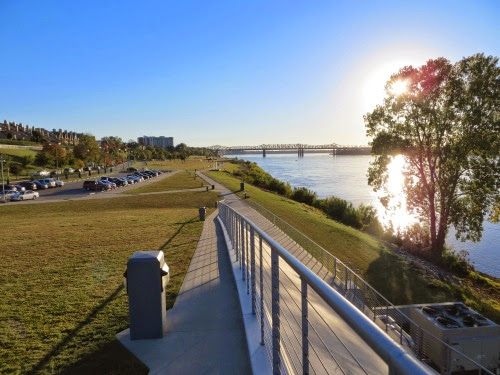
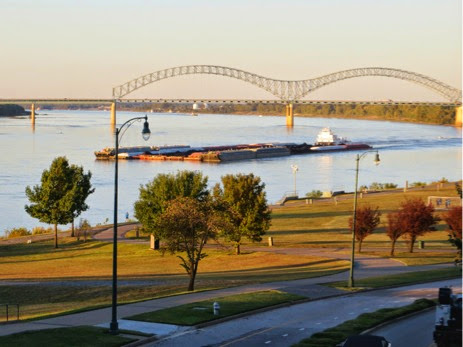
We climbed the stairs in the middle of the walk and wound through a nearby neighborhood.
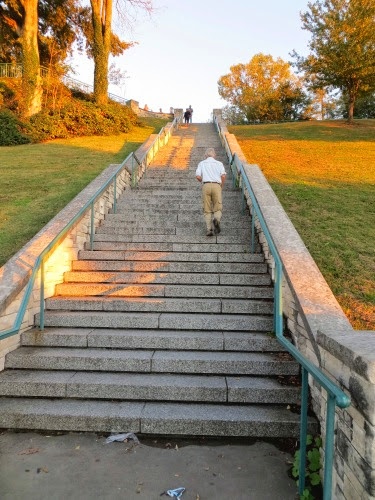
Then back to the water, along the waterfront and back down Beale Street for and evening view. Now, the Grizzlies, the NBA team, was in their home opened this night and Beale was packed, especially the restaurants. $2.00 beer for Happy Hour but Gary and I wouldn’t know what to do with this so we just got a greasy hamburg and greasy fries. I’ve had enough grease to last a year now.
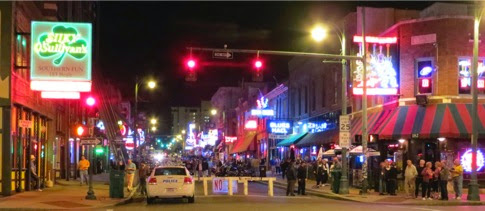
Back to the parking lot which now was charging $10 since the Grizzlies were playing. We quickly got into our car and pulled out of the parking spot since there were others circling.
Marvelous day in Memphis.

No comments:
Post a Comment